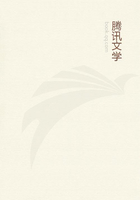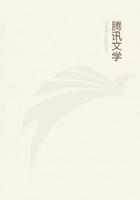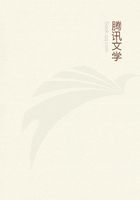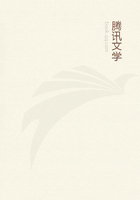21. Rights of lods et ventes on copyholders, due by the purchaser of property liable to this lien, in forty days. "In Bourbonnais, the lods et ventes are collected at a third, a quarter, at the sixth, eighth and twelfth rate." The seignior of Blet and Brosses collects at rate six. It is estimated that sales are made once in eighty years;these rights bear on 1,356 arpents which are worth, the best, 192livres per arpent the second best, 110 livres, the poorest, 75 livres.
At this rate the 1,350 arpents are worth 162,750 livres. A discount of one-quarter of the lods et ventes is allowed to purchasers. Annual revenue of this right 254 livres.
22. Right of tithe and of charnage. The seignior has obtained all tithe rights, save a few belonging to the canons of Don-le-Rol and to the prior of Chaumont. The tithes are levied on the thirteenth sheaf.
They are comprised in the leases.
23. Right of terrage or champart: the right of collecting, after the tithes, a portion of the produce of the ground. "In Bourbonnais, the terrage is collected in various ways, on the third sheaf, on the fifth, sixth, seventh, and commonly one-quarter; at Blet it is the twelfth." The seignior of Blet collects terrage only on a certain number of the farms of his seigniory; "in relation to Brosses, it appears that all domains possessed by copyholders are subject to the right." These rights of terrage are comprised in the leases of the farms of Blet and of Brosses.
24. Cens, surcens and rentes due on real property of different kinds, houses, fields, meadows, etc., situated in the territory of the seigniory. In the seigniory of Blet, 810 arpents, divided into 511portions, in the hands of 120 copyholders, are in this condition, and their cens annually consists of 137 francs in money, sixty-seven bushels of wheat, three of barley, 159 of oats, sixteen hens, 130chickens, six cocks and capons; the total valued at 575 francs. On the Brosses estate, eighty-five arpents, divided into 112 parcels, in the hands of twenty copyholders, are in this condition, and their total cens is fourteen francs money, seventeen bushels of wheat, thirty-two of barley, twenty-six hens, three chickens and one capon; the whole valued at 126 francs.
25. Rights over the commons (124 arpents in Blet and 164 arpents in Brosses).
The vassals have on these only the right of use. "Almost the whole of the land, on which they exercise this right of pasturage, belongs to the seigniors, save this right with which they are burdened; it is granted only to a few individuals."26. Rights over the fiefs mouvants of the barony of Blet. Some are situated in Bourbonnais, nineteen being in this condition. In Bourbonnais, the fiefs, even when owned by plebeians, simply owe la bouche et les mains to the seignior at each mutation. Formerly the seignior of Blet enforced, in this case, the right of redemption which has been allowed to fall into desuetude. Others are situated in Berry where the right of redemption is exercised. One fief in Berry, that of Cormesse held by the archbishop of Bourges, comprising eighty-five arpents, besides a portion of the tithes, and producing 2,100 livres per annum, admitting a mutation every twenty years, annually brings to the seignior of Blet 105 livres.
Besides the charges indicated there are the following:
1. To the curate of Blet, his fixed salary. According to royal enactment in 1686, this should be 300 livres. According to arrangement in 1692, the curate, desirous of assuring himself of this fixed salary, yielded to the seignior all the dimes, novales, etc. The edict of 1768 having fixed the curate's salary at 500 livres, the curate claimed this sum through writs. The canons of Dun-le-Roi and the prior of Chaumont, possessing tithes on the territory of Blet, were obliged to pay a portion of it. At present it is at the charge of the seignior of Blet.
2. To the guard, besides his lodging, warming and the use of three arpents, 200 livres.
3. To the steward or registrar, to preserve the archives, look after repairs, collect lods et ventes, and fines, 432 livres, besides the use of ten arpente.
4. To the king, the vingtièmes. Formerly the estates of Blet and Brosses paid 810 livres for the two vingtièmes and the two sous per livre. After the establishment of the third vingtième they paid 1,216livres.
Notes:
[1] Archives nationales, G. 319 ("Etat actuel de la Direction de Bourges au point de vue des aides," 1774).
[2] Blet, at the present day, contains 1,629 inhabitants. (This was around 1884, in 1996 it remains a small commune and a village of 800 people on the route nationale N76 between Bourges and Sancoins. SR.)[3] The farms of Blet and Brosses really produce nothing for the proprietor, inasmuch as the tithes and the champart (field-rents), (articles 22 and 23), are comprehended in the rate of the leases.
---------------------------------------------------------------------------END-NOTE 3:
DIFFERENCE BETWEEN THE ACTUAL AND NOMINAL REVENUES OFECCLESIASTICAL DIGNITIES AND BENEFICES.
According to Raudot ("La France avant la Revolution," p.84), one-half extra must be added to the official valuation; according to Boiteau ("Etat de la France en 1789," p.195), this must be tripled and even quadrupled. I think that, for the episcopal sees, one-half extra should be added and, for the abbeys and priories, double, and sometimes triple and even quadruple the amount. The following facts show the variation between official and actual sums.
1. In the "Almanach Royal," the bishopric of Troyes is valued at 14,000 livres; in "France Ecclésiastique of 1788," at 50,000.
According to Albert Babeau ("Histoire de la Révolution dans le department de l'Aube"), it brings in 70,000 livres. In "France Ecclésiastique," the bishopric of Strasbourg is put down at 400,000livres. According to the Duc de Lévis ("Souvenirs," p. 156) it brings in at least 600,000 livres income.















